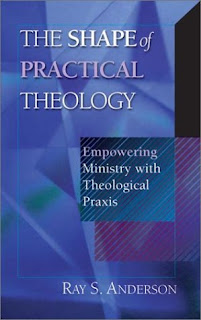Theology: at the heart of mission

This post continues a series looking at The Shape of Practical Theology by Trinitarian theologian Ray S. Anderson. For other posts in the series, click on a number: 1 , 2 , 4 , 5 , 6 , 7 , 8 , 9 , 10 . 11 , 12 , 13 , 14 , 15 . Last time we noted how Dr. Anderson emphasizes that mission is at the heart of theology. This time, we'll see how he places theology at the heart of mission. Jesus Healing Centurion Servant by Paolo Veronese Public Domain via Wikimedia Commons According to Anderson, there are many ways people care for one another, and in so doing alleviate human suffering. While such efforts are laudable, they only constitute Christian ministry to the extent they reveal the reality of "God's revelation and reconciliation through Jesus Christ" (p. 54). Anderson comments: A social worker or psychiatrist may be able "make" people better or to "make" the conditions of human existence better. But...

